Sydlings
Sydlings
A field within the great manorial East Field
Sydlings (Parcel 978) was a small field, rising steadily from south to north, originally within the great East Field of the Manor of Kingston. 'Sydling' may have been a personal name of a former owner, or the name may derive from the Old English 'sid', meaning broad, and 'hlinc' being a bank separating strips of arable land in medieval times.
Sydling's Lane, later to become called Rosebery Avenue, was originally simply a field access track leading through fields from Brickyard Lane (today's St Michael's Avenue).
The 1589 Terrier referred to "In Edmund Wills Close next to Selling's Lane" in the East Field. In 1790 a lease concerning fields by the same lane referred to Sotlinch or Sidland "by Sidland Lane" and a will of 1799 refers to an orchard "called Sidlands in Sidland Lane". A conveyance of 1800 referred to it as Sydlands Lane as did a deed of exchange dated 1823. It was called Sydling's Lane in 1805.
Sydling's Lane began to be extended and laid out as a made-up road around 1895 and was re-named Rosebery Avenue for Archibald Philip Primrose, 5th Earl of Rosebery.
At the time of the 1846 Tithe Apportionment Sydlings (Parcel 978) was owned by local farmer Samuel Isaac (whose farmhouse was later to become the Glovers Arms on Reckleford) and let to Charles Marsh. It was as noted as an orchard as well as pasture for grazing livestock. It measured 2a 3r 32p.
Sydlings was bounded on the north by Sydling's Lane, on the east by Little Hather Mead (Parcels 977 and 977a), on the south by Penny's Orchard (Parcel 975) and on the west by Hop Yard (Parcel 979).
Today the former Sydlings is occupied by the houses and gardens of Percy Road - laid out and built during 1909 and 1910.
For details on historic land measurement (ie acres, roods and perches) click here.
maps
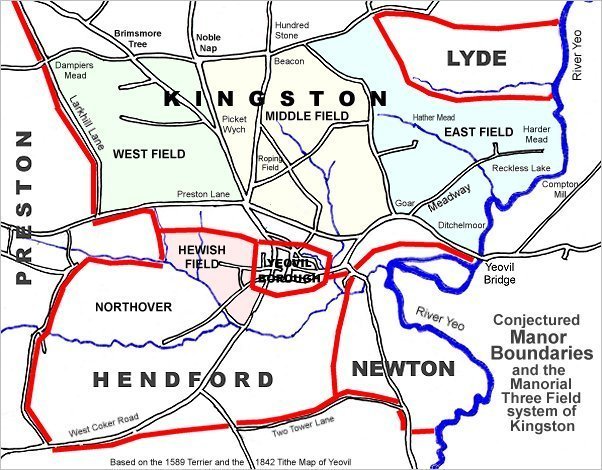
This map, based on the descriptions in the 1589 Terrier and the 1846 Tithe Map of Yeovil shows the approximate boundaries of the Manors of Kingston and Hendford as well as the manorial three-field system used in Kingston.

A map of the great medieval East Field of Kingston Manor showing conjectured locations of several fields based on descriptions in the 1589 Terrier.
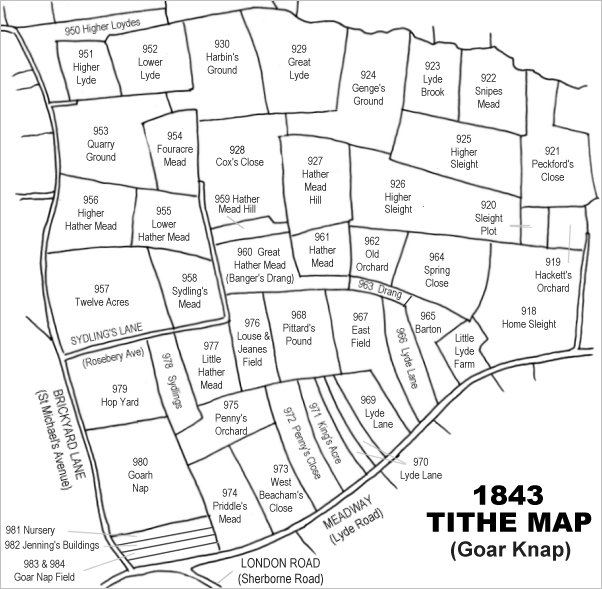
Drawn from the 1846 Tithe Map with field names added from the 1846 Tithe Apportionment, with Hop Yard (Parcel 979) in the lower left quadrant.
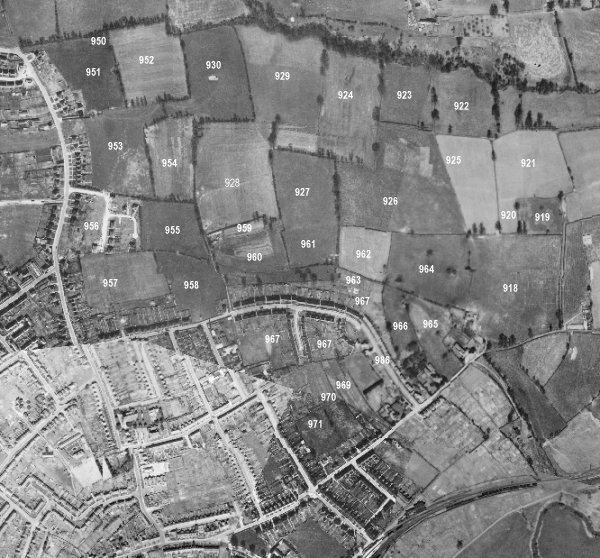
ThThe 1946 aerial survey photograph (somewhat mis-aligned at bottom left) with parcel numbers of 1846 plotted on. By this time, however, Sydlings has been built on and contained the houses and gardens of Percy Road (laid out and built during 1909 and 1910).
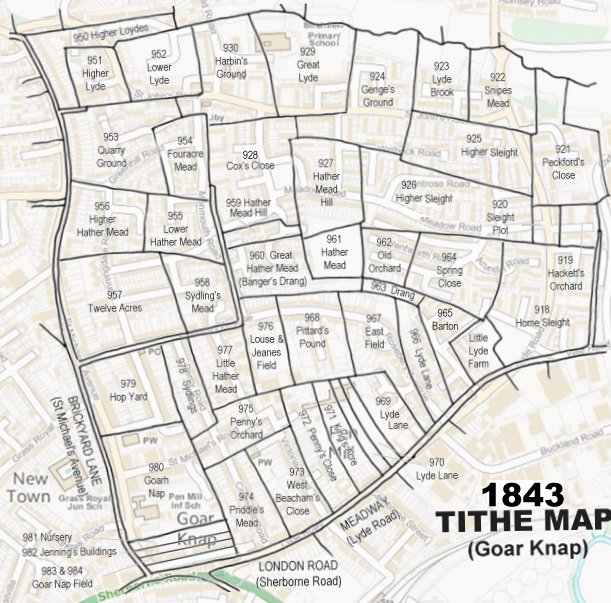
The 1843 Tithe Map overlaid onto a modern map of the area.
gallery
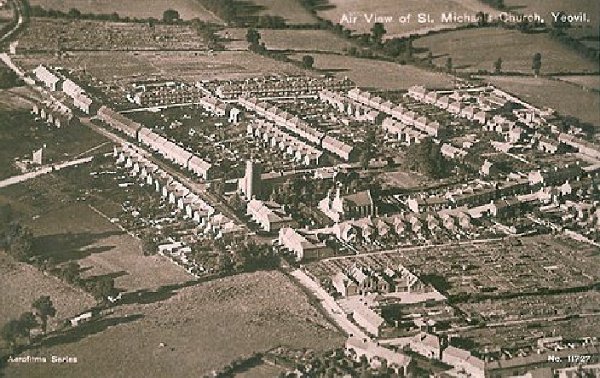
An aerial postcard of the very early 1920s with St Michael's church at centre. This photograph demonstrates remarkably well how isolated this part of Yeovil was at the time; St Michael's Avenue runs diagonally across the image from bottom right to top left, the first road off to its right is St Michael's Road, the last road off to the right towards the top of the photo is the partly-built Rosebery Avenue and the three roads between are, from left to right, Glenville Road, Percy Road and Alexandra Road.
The former Sydlings was that part bounded by Rosebery Avenue at the top, and contained the houses and gardens of Percy Road.
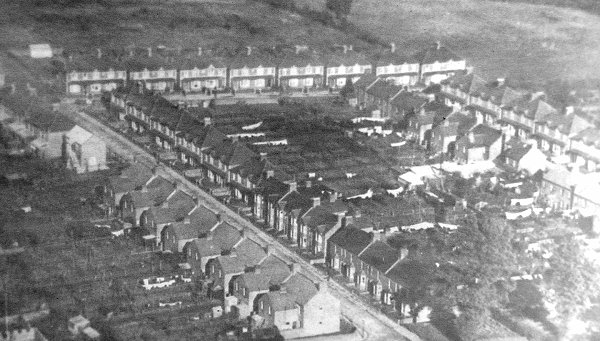
Courtesy of the
Western Gazette
This aerial photograph dates to 1928 and shows Rosebery Avenue running across the top of the photograph with Glenville Road running from top left to bottom centre and Percy Road at right.

Percy Road seen from Rosebery Avenue. Photographed in 2016.